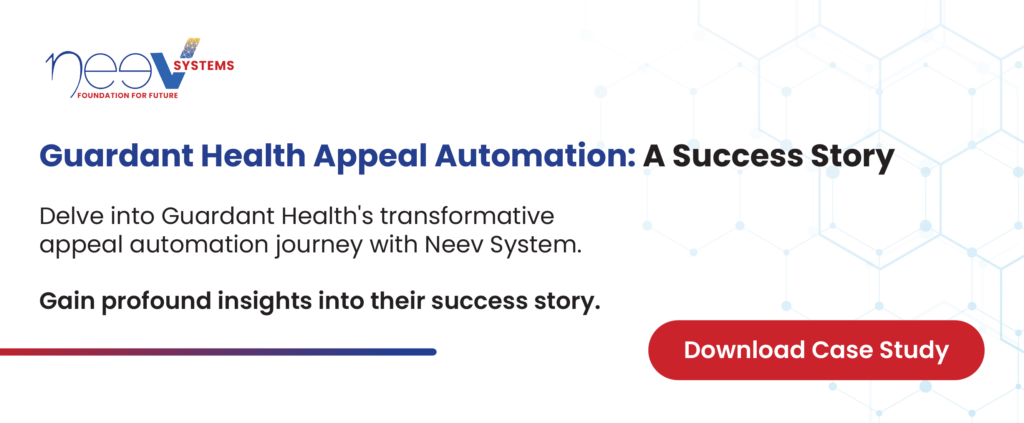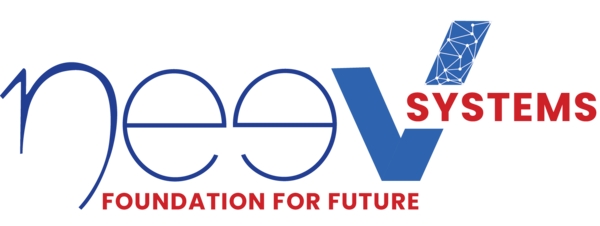Modern organizations navigate a vast and ever-expanding landscape of software platforms. The quest for efficiency, innovation, and competitiveness often leads organizations to adopt multiple software solutions tailored to their unique needs, ranging from task management tools to specialized apps like HR, CRM, and environmental, health, and safety software.
While every new software addition to the company’s business toolkit empowers organizational capabilities, it also brings an inevitable caveat: the more software tools you incorporate into your systems, the more complex those systems become. Managing this complexity, ensuring seamless software integration, and fostering efficient communication between these diverse platforms can be a management nightmare and drain the company’s resources. Instead of investing in new technologies to drive and support business innovation, business leaders end up investing large sums to keep this patchwork of ill-assorted software environment running.
The key challenge lies in integrating and harmonizing these tools effectively. A disjointed and siloed software stack ultimately leads to a time-consuming, energy-draining endeavour as different teams across the organization strive to make multiple software solutions work in unison.
In this blog, we will uncover the core challenges organizations face, delving into the myriad obstacles they encounter and, finally, charting a course toward enterprise integration services that promise to simplify application management and streamline integrations.
The Challenges of Maintaining and Managing Multiple Software Systems
Software applications form the backbone of digitally driven enterprises. Each software solution or platform in a company’s tech stack is designed to address a specific aspect of its operations. They enable clear communication, workflow automation, real-time analytics, and more. Though initially, a small stack of software platforms can be managed internally, eventually, companies must integrate these platforms to get 360-degree visibility of business operations. Without proper integration, the data remains highly siloed, unfit to power real-time insights for data-driven decision-making.
Over time, the growing stack of software solutions brings forth an array of challenges:
- Data Management Issues: Handling data dispersed across numerous software systems is time-consuming, as information often exists within the confines of specific applications. This requires extensive efforts in reconciling disparate data sets. Similarly, managing isolated customer and departmental databases obstructs information sharing and collaboration, particularly when these databases lack effective communication channels, posing significant challenges to efficiency improvements and streamlined operations.
- Divergent Revenue Reports: Handling financial reporting becomes complex when data must be extracted from various applications and standardized into a single accounting template. This process can result in multiple or inaccurate revenue report versions and potential data access issues.
- Integration Complexity: As businesses adopt an increasing number of software solutions, integrating them seamlessly becomes more daunting. Disparate systems may not communicate effectively, leading to data silos and inefficient workflows.
- Maintenance Overload: With each software solution comes the responsibility of maintenance, updates, and patches. Managing multiple platforms means IT teams can be perpetually engaged in this upkeep, leaving little time for strategic tasks.
- Task Switching Bottlenecks: The need to switch between various systems to complete even the simplest tasks can lead to significant productivity bottlenecks. Teams struggle to collaborate seamlessly, and frustrated employees may resort to patchwork solutions that fail in the long term.
- Paperwork and Data Input Redundancies: Using a patchwork of software solutions increases the likelihood of human errors due to data duplication and omission. Overlapping processes and the need for data reentry across systems contribute to inconsistent and unreliable data.
- User Experience Disparity: Different platforms often mean different user interfaces and experiences. This can lead to user frustration as they grapple with inconsistent workflows and interfaces. So, organizations may incur heightened training requirements to bridge the gap, further burdening resources. Ultimately, this UX disparity significantly reduces overall productivity, hindering the efficient utilization of software tools.
- Security Concerns: The more software platforms a company uses, the greater the potential attack surface for cyber threats will be. Ensuring each platform’s security and maintaining a cohesive cybersecurity strategy can be overwhelming. It might call for external cybersecurity expertise.
- Cost Escalation: Maintaining many non-integrated software systems can inflate company overhead. Licensing fees, subscriptions, and support costs can rapidly escalate with a growing software platform portfolio. You end up paying for software that remains underutilized within your organization, undermining productivity and financial stability.
Charting a Course to Connect Business Over Bus Like Infrastructure
- Conscious Collaboration
Collaborative planning can be instrumental in creating actionable roadmaps and establishing priorities between teams. Business leaders must clearly define responsibilities for integration and promote cross-functional collaboration between relevant teams.
Bringing in all teams and stakeholders while setting goals helps decode the “why” and “what,” allowing team members to propose value-oriented initiatives for easier prioritization against product initiatives. Maintain a visible roadmap and proactively communicate changes in scope or timelines to prevent issues like teams disengaging delayed decisions, or resource shortages.
- Clear Ownership
Effective project ownership is critical. Business leaders must designate a full-time project owner for different software solutions and ensure they actively take charge of the project internally, resolving bottlenecks as they arise. It’s wise to assign a cross-product architect to the project team to manage high-level design and implementation concerns.
Furthermore, defining ownership for the overall customer experience (platform or product) and each major deliverable helps prevent work overlaps. Establishing clear ownership is critical to avoiding team conflicts and bottlenecks and keeping stakeholders informed about changes in scope or timing.
- Creating Shared Milestones
To ensure transparency in tracking integration status/progress, teams must invest in sharing up-to-date timelines and making weekly adjustments to reflect the evolving reality. Adopt an incremental approach to integrating and celebrating achievements in small, manageable steps, enlisting team members as advocates to maintain momentum and morale.
Cultivate a collective commitment to quality by incorporating integration and testing phases into your plan and establishing a clear “definition of done” that all stakeholders agree upon and document. It minimizes the risk of unexpected issues during integration testing, the slowdown of integration progress, and misalignment in deliverables and timelines in the complex landscape of software integration.
- Addressing Software Platform Integration Dependencies
Software integrations are complex and demand proactive management of dependencies. So, business leaders must prepare for potential bottlenecks by mapping charts outlining a team’s reliance on others and vice versa. They must assign dedicated owners from both sides of each dependency to monitor and coordinate effectively. Ensure these dependency owners grasp the implications of changes and effectively communicate them to all upstream and downstream teams.
This practice helps mitigate the risk of downstream delays, missed milestones, and the frustration and inefficiencies that can arise from unmanaged dependencies.
- Centralized Software Management
The key to managing a growing software portfolio is to deploy a centralized management system equipped with a unified dashboard for comprehensive oversight of all software applications, ensuring streamlined control, monitoring, and updates. Businesses must identify and leverage compatible software solutions to reduce complexities and enhance system cohesion. Embracing automation tools and partnering with an AMS can help streamline workflows, enhance productivity, and easy integration maintenance.

Simplify Your Software Integrations
Streamline Platform Integrations With Neev
Planning and implementing integrations is a complex endeavor, requiring platform knowledge and industry expertise. While many organizations leverage multiple software platforms for growth and efficiency, they often lack the in-house capability to support these integrations effectively. We’ve explored the challenges posed by disparate systems, maintenance overhead, security concerns, user experience variations, and escalating costs. Effective software integration and application-managed services offer centralized control, standardization, compatibility, automation, and clear ownership, mitigating these challenges and enabling seamless data flow, enhanced security, improved user experience, and cost control, ultimately fostering organizational growth and efficiency.
That’s where Neev’s expertise lies.
Specializing in MuleSoft, Oracle Fusion Middleware, and Boomi for providing Integration Services, we bring a wealth of experience to the table. Our strategic implementation and advisory services are meticulously designed to facilitate seamless integrations across enterprise applications to create a single source of truth for all stakeholders.
Our experts tailor and deliver customized integration solutions based on the customer’s unique business needs. Through agile delivery models, reusable integration patterns, and cost-effective dual-shore operations, we minimize complexity and enhance organizational agility, helping unlock the full potential of your IT ecosystem.

Real-world examples:
- Guardant Health, a leading precision oncology company, faced challenges tracking kits sent to physicians, resulting in delayed tests and a compromised patient experience. Neev Systems addressed these issues by implementing integration workflows to track kit statuses, replacing legacy processes. Dashboards were created to monitor kit status, orders, and expiration. Third-party vendor integration reduced paper usage, cutting $450k/year in overnight shipping costs. Proactive monitoring decreased lost kits, minimized order cancellations, and reduced manual reporting hours from 28 to 5 hours per week for the supply chain team, optimizing their productivity.
- Guardant Health encountered issues with their fax vendor, sFax, such as inadequate support, Salesforce integration problems, and time-consuming manual fax-related case searches. Neev Systems tackled these problems by transitioning to a new vendor, mFax, and integrating workflows. Users were encouraged to use mFax for direct faxing, and CRM system integration facilitated fax status tracking. This resulted in a 60% reduction in case resolution time, minimized user errors, and improved the customer experience, ensuring high-quality faxes for physicians and better overall efficiency.
At Neev Systems, we take pride in our technical proficiency, adaptability, and unwavering dependability, all of which contribute to streamlining enterprise integrations for improved collaboration and data exchange within and outside your organization. With Neev Systems as your integration partner, you can confidently navigate the intricate software landscape, knowing that you have a seasoned crew ready to chart a course for your success.

Simplify Software Integration

Ansar Syed
With 10+ years of experience as an integration architect, Ansar specializes in delivering complex business solutions through strategic planning, custom designs, and process automation. He collaborates closely with stakeholders to enable seamless business processes and exceptional outcomes using integration tools.


